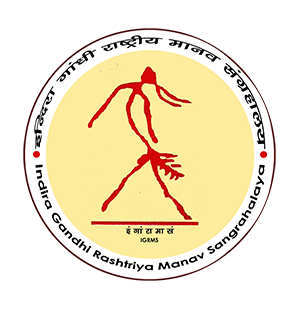काम्बली नृत्य की कथा
कलाकार: श्रीमती मानकी बापू वायड़ा, श्री बाळू लाडक्या धुमाड़ा
क्षेत्र: थाणे, महाराष्ट्र
भगत बताते हैं कि एक बार धरती पर बारह वर्ष लम्बा अकाल पड़ा। कुँए-बावड़ी सब सूख गये। ढोर मवेशी मरने लगे। लोग जैसे-तैसे जंगली कंदमूल, मोखा की पत्ती और शहद खाकर जीवित थे। सिर्फ कुछ धनी लोगों के पास अनाज बचा था। गाँव वालों ने उनसे गावतरी, घरतरी, कन्सारी देवी तथा नारायण देव को प्रसन्न करने के लिये काम्बळी नृत्य का आयोजन करने को कहा। बड़े घर के कंजूस लोगों ने बेमन से सड़े दलिये का प्रसाद चढ़ाया पर लोग उस पर भी टूट पड़े और मनोयोग से पूजा करने के बाद काम्बळी नृत्य करने लगे। बेहद कमजोरी के कारण, नृत्य के नाम पर वे केवल सिर हिला पा रहे थे। कन्सारी यानी अन्न देवी स्वयं सुन्दर स्त्री का रूप रखकर नृत्य में शामिल हुई।
आखिरकार इनकी लगन से देवता प्रसन्न हुए और धरती पर वर्षा लौट आई। तब से हर वर्ष वारली लोग पाउस (वर्षा) लाने के लिये काम्बळी नृत्य करते हैं तथा धरती माता की नसीहत के अनुसार मूगली (चींटी) की तरह मेहनत करते हैं और वर्षा आने के पहले ही घर में अन्न का भंडारण भी करते हैं।
वारली चित्र शैली में मनुष्यों और जानवरों की आकृति त्रिभुजों को जोड़कर बनती है। विविध पेड़-पौधों का बाहुल्य होता है और सारी आकृतियों में लयात्मकता होती है। चित्र में अकाल, फिर वर्षा और खुशहाली के अलावा चींटी की बामी का चित्र भी बनाया गया है।
THE STORY KAMBRI DANCE
Artist: Smt. Manki Bapu Vayeda, Shri Ladkya Dhumada
Region: Thane, Maharashtra
Elders tell of a twelve year long famine that once of earth. All the wells and dried, the cattle began to die, and survived difficulty forest produce such tubers, honey and mokha leaves. Only few people had grain stores. The village men them organise the Kambri dance festival please goddesses Gavtari, Dhartari and Kansari and the god Narayan. The rich people only parted porridge offering. The village men did not complain against it, the porridge happily and tried putting all their zest dance. However, they were very weak despite the efforts were hardly able to get the rhythm right. Even then, the gods pleased with sincere efforts and blessed them with rain.
Ever since then, the Warlis perform the dance invoke monsoon, work hard like ants and enough grain for the monsoons.
There is characteristic rhythm in the Warli style of painting which can be compared in the two movements of village men, before and after the depicted in the story. Also the anthill structure is crucial motif in this painting.



